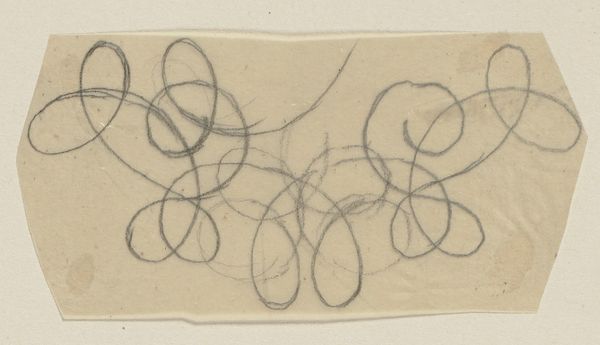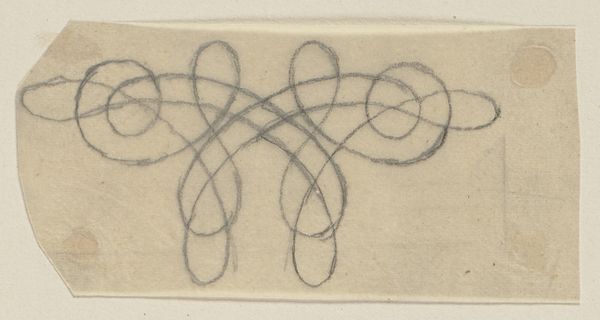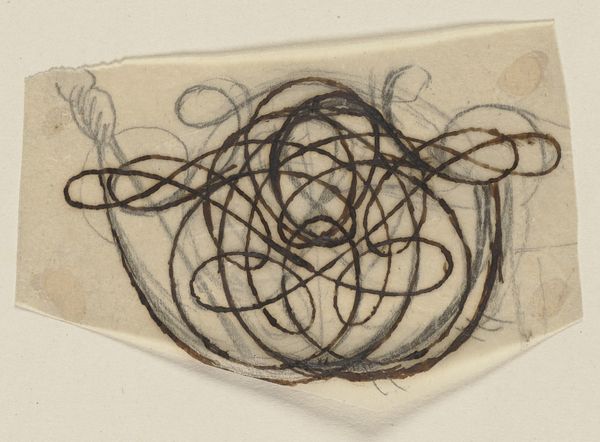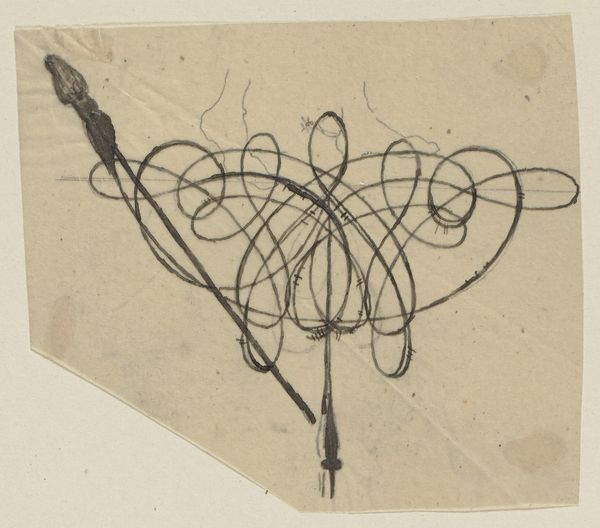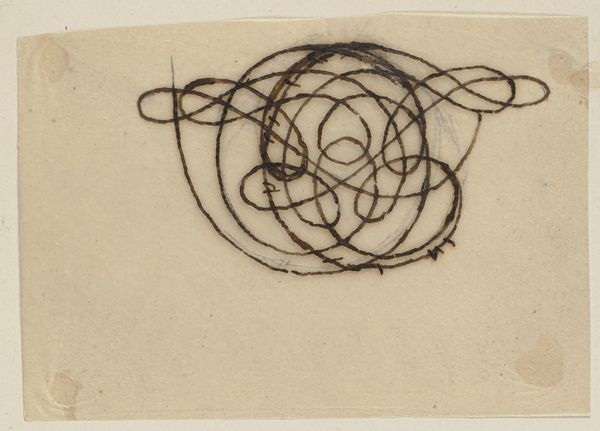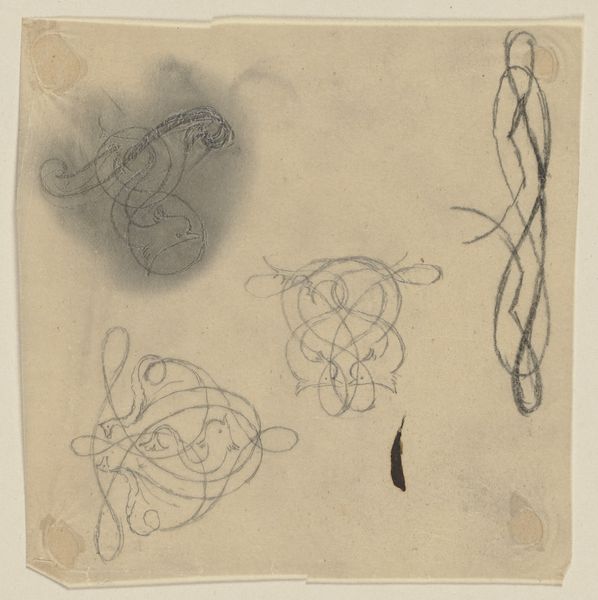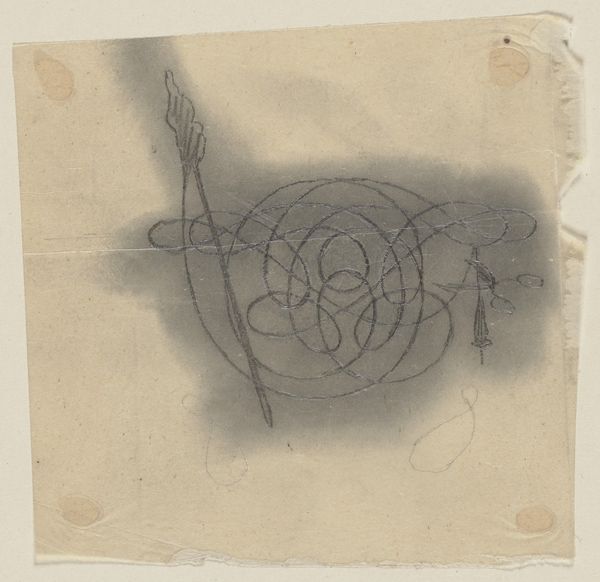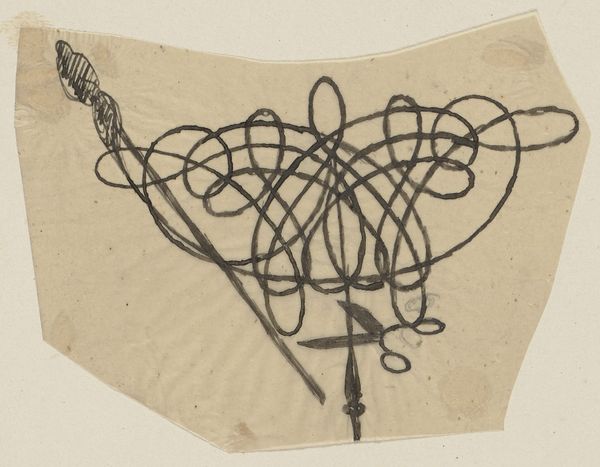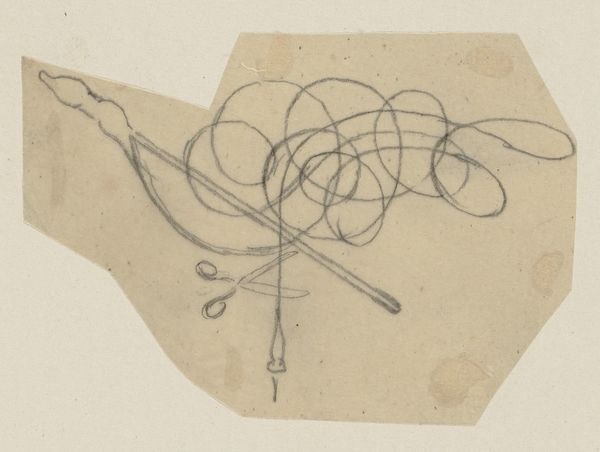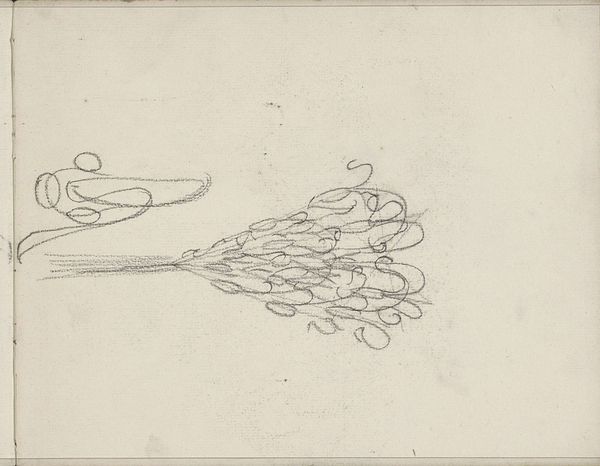
Copyright: Public Domain
Curator: Ah, here we have Paul Konewka’s “Ornament des Nick Bottom als Pyramus mit Garnspule,” crafted circa 1867-1868. It's a striking example of his ink and pencil drawings. Editor: It's... chaotic. Like a tumbleweed made of cursive. I can see a single, bold stem with what looks like the hint of a bud on the left, yet its starkness accentuates the interwoven circles occupying most of the pictorial field. What is that tangle? Curator: Well, Konewka was fascinated by silhouettes and often depicted literary characters, placing them in detailed societal settings. In this piece, he presents Nick Bottom, the weaver from Shakespeare’s “A Midsummer Night’s Dream,” reimagined as Pyramus, but rendered as a purely ornamental design. Think about the socio-cultural influences of the time—the Romantic era’s penchant for folklore blending into the more rigid Victorian structure, perhaps offering critique through whimsical imagery. Editor: Yes, Romanticism and its stylistic impact come immediately to mind. The use of line is rather captivating. The loops—deliberately uneven, as if spontaneously generated—show a fascinating manipulation of visual weight, establishing the mood, the dynamism of Romantic art that valued sentiment above meticulous representation. Curator: Exactly. The "Garnspule," the yarn spool, suggests industry and perhaps a slight mocking commentary of the bourgeoisie, framing a working-class figure within refined ornamental calligraphy. It touches on how societal roles become intertwined with performance and expectations. Consider its display here in the Städel Museum— it creates its own dialogue about high and low art forms within institutions. Editor: You know, the way the ink bleeds slightly into the paper only strengthens the drawing's emotive character. This wasn’t about technical exactitude, the appeal lies precisely in its imperfection. In a purely formal sense, those tonal shifts really work to make it pop. Curator: Indeed. Its seeming messiness also echoes Bottom's own confusion in the play, and also reminds us of how working classes were starting to define cultural narratives. Even the materials—humble ink and pencil—reflect accessibility and everyday life, brought into what could be considered “high art”. Editor: Seeing it from both angles truly transforms the experience. The visual dance of line and curve really elevates its playful simplicity. It has a subtle brilliance about it. Curator: And understanding its role within the narrative of the era certainly enriches the experience, giving depth to this unusual artifact of theatre history and artistic form.
Comments
No comments
Be the first to comment and join the conversation on the ultimate creative platform.
